Multiple species of ticks live in California. From deserts to pine and mixed woodlands, ticks can settle in different areas of the state and may choose to bite different species, including humans.
Some ticks in California only bite small mammals and specific species such as chickens. Others may bite small and large animals and may not pass on the opportunity to bite humans.
Lyme disease cases are also rare in California compared to other states.
However, ticks in California transmit Rocky Mountain Fever and Rabbit Fever. These are some of the typical diseases most species of ticks here can spread.
The beginning of the summer marks the peak season for nymph ticks while mid to late summer weeks is the peak season for adult ticks. Both nymphs and adults can bite people and transmit diseases.
Here are some of the most common types of ticks in the state with their particularities.
Table of Contents
Common Ticks in California
Coastal, Northern, and Southern California are among the regions where the following species live.
1. Pacific Coast Tick

Pacific Coast Ticks (Dermacentor occidentalis) are mostly found in California, from Oregon to Baja California.
A wide distribution of the species along the West Coast inspires its name. These types have a higher probability of transmitting Rocky Mountain Fever.
Pacific Coast Ticks prefer to bite large mammals. They choose cattle and horses and they readily bite humans.
A female Pacific Coast Tick can bite and suck the blood of its prey for almost a week before dropping to lay eggs.
All types of hosts are considered by the species, including horses and sheep. Cats and dogs can also catch The Pacific Coast Tick.
This species can cause paralysis in some of these smaller hosts.
In humans, this species can lead to skin level issues such as eschar and spread Pacific Coast Fever, a condition similar to The Rocky Mountain Fever.
2. Western Black-legged Tick

The Western Black-legged Tick (Ixodes pacificus) is a species that can transmit Lyme disease.
It has widespread California distribution. These ticks live in various habitats such as in grasslands close to forests. Dense vegetation next to water is also where they can be found.
Higher humidity is needed for The Western Black Tick, which is known to end its season in mid-summer due to lower humidity.
Western Black-legged Ticks are active since December in California. As The Pacific Coast Tick, The Western Black-legged Tick is also highly active in April, a period when its nymphs start to look for food as well.
A species seen in high numbers in coastal areas, The Western Black-legged Tick can help spread germs that cause diseases in humans.
It only attaches itself to mammals and humans as an adult tick as its nymphs prefer small hosts for blood such as rodents.
3. American Dog Tick
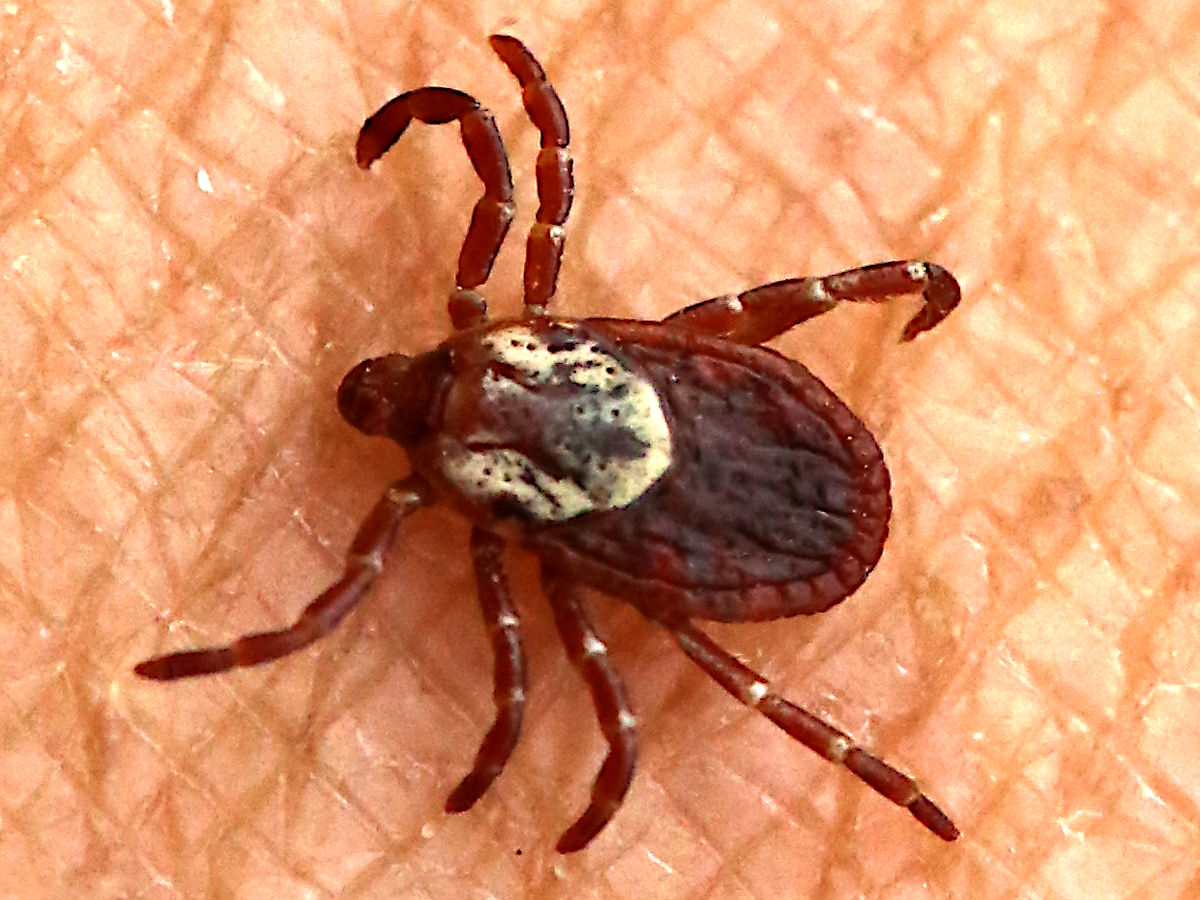
American Dog Ticks (Dermacentor variabilis) have established tick species interested in mid-sized hosts such as dogs, cats, and skunks.
These ticks can also bite humans but they prefer a smaller host and their season starts in April.
They remain active up until August, with nymphs being more active at the beginning of the season and adults latterly in the summer.
A vector for Tularemia, these types of ticks are found across the state.
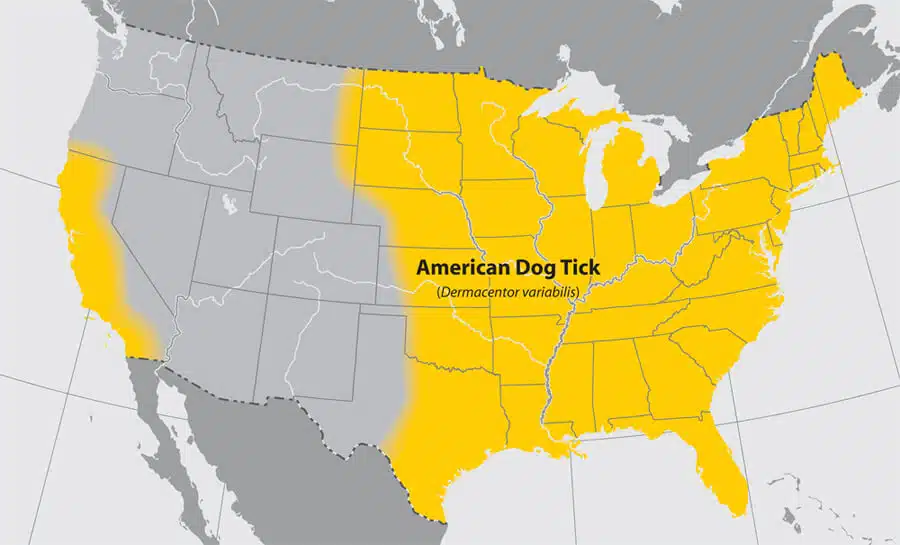
They live in grassland and wait for a passing host to attach themselves. They bite the host and mate on the host before they die. Females lay eggs in tall vegetation before dying and after detaching themselves from the host.
The presence of a host dictates the lifespan of these ticks. American Dog Ticks can feed, mate, and die quickly, within days.
But they can also survive up to a couple of years waiting for a host if there’s non around.
4. Brown Dog Tick

The Brown Dog Tick (Rhipicephalus sanguineus) is also known as the 3-Host Tick as it attaches to a new host as larvae, nymph, and an adult.
These types of ticks prefer to attach themselves to a single species, typically to digs.
Larvae feed and drop to the ground to change hosts as they become nymphs. The nymph then drops to change hosts as an adult.
Female-fed and mated Brown Dog Ticks also drop to the ground to lay eggs on grasses or other types of vegetation.
Female Brown Dog Ticks lay more eggs than the females of other species. Up to 7.000 eggs are laid by each female soon after detaching from a dog host.
Brown Dog Ticks can transmit disease-causing bacteria as larvae, nymphs, or adults.
5. Pajahuello Tick

This beige or tan type of tick is one of the largest in California.
It measures anywhere between 6 and 10mm and it stands out with its flattened shape and its bright color that blends in with its surroundings.
Found all across the state, particularly in areas with deer, Pajahuello Ticks (Ornithodoros coriaceus) are among the species which rarely bite humans but which bite cattle and horses.
Their bites may even lead to abortion in the bovines.
While they rarely bite humans, these ticks have a very painful bite, given their large size.
Areas around the state close to woodlands and grasslands with deer and cattle are the most likely places to catch the tick.
Pine forests tend to attract deer and these ticks.
Cattle around pine woodlands are affected by the species but humans are only affected through rare painful bites as Pajahuello Ticks don’t transmit diseases to humans,
6. Western Dog Tick
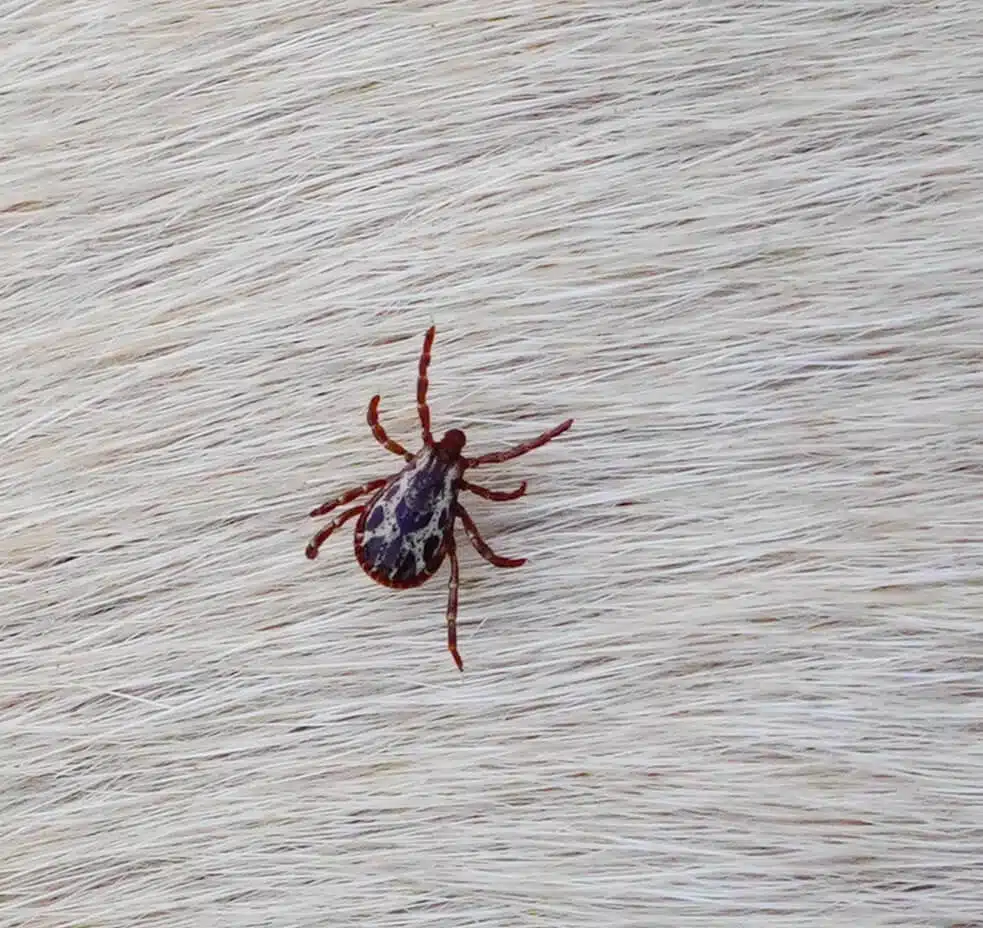
Western Dog Ticks (Dermacentor similis) are a different species than the dog ticks found in Eastern US states.
It has long been believed this species was the same around North America but it turns out The Western Dog Tick is a different species.
One of the differences between American Dog Ticks and Western Dog Ticks is that the latter needs a longer attachment time to attach to transmit diseases.
Its favorite hosts include dogs. But it may also bite humans.
This brown tick is found all around California, particularly in the coastal areas and the Northern areas.
While it rarely bites humans, it carries disease-causing bacteria and it can spread The Rocky Mountain Fever.
7. Bighorn Sheep Tick
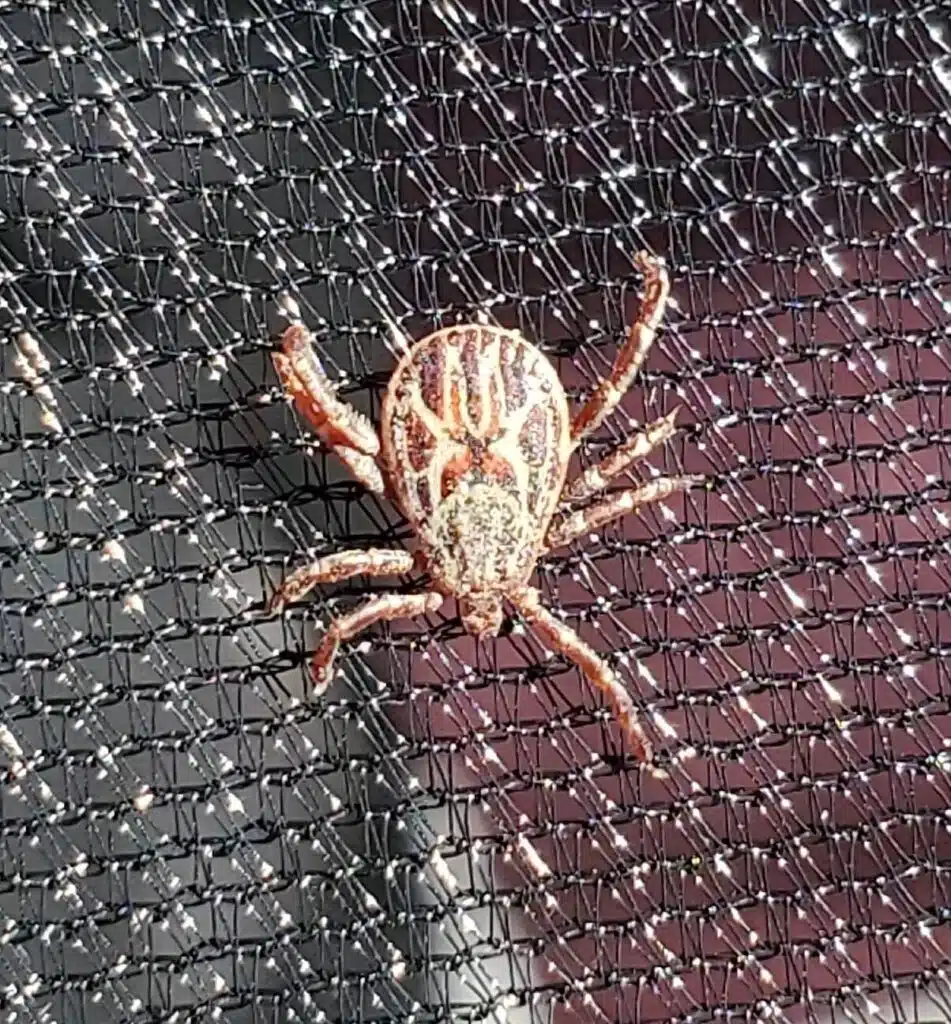
This type of tick (Dermacentor hunteri) is specific to the Southwestern US territories with intermittent collection from bighorn sheep.
Its presence is reduced across many states but is still prevalent in California.
Bighorn sheep across the state can carry these types of ticks.
Desert Bighorn Sheep in The Mojave Desert, Sonoran Desert, and Baja California are among the deserts these horned sheep inhabit.
While these ticks are specifically interested in Bighorn Sheep, they can also bite other animals such as dogs. They may bite humans and transmit diseases.
8. Rabbit Tick
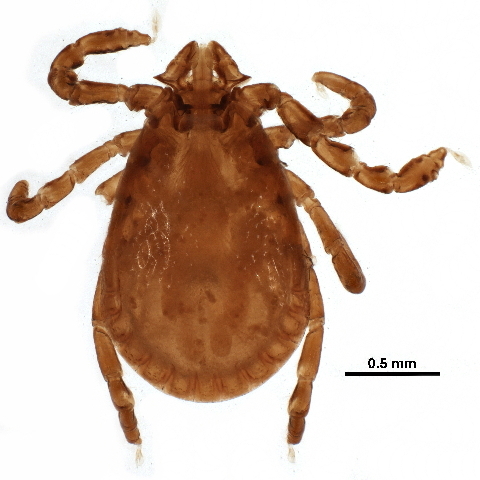
Woodlands around California are the main habitat of the Rabbit Tick (Haemaphysalis leporispalustris). Found around coniferous and deciduous woodlands in dense vegetation, this is a type of tick that only feeds on rabbits.
Jackrabbits are among the typical species that the tick attaches to.
It lives in grasslands and vegetation close to woodlands where it seeks out a small area of the plant to live.
From here, it shows patience in waiting for a passing host to attach.
Ticks of this genus rarely bite humans but they may bite small and medium-sized animals such as skunks and dogs.
This tick may transmit diseases. While most bites may not transmit bacteria, Rabbit Tick bites have been associated with Rocky Mountain Fever.
9. Rocky Mountain Wood Tick

The Rocky Mountain Wood Tick (Dermacentor andersoni) is a rare type of tick in California. This is a species that is present In Northeastern California.
Typical hosts of the species depend on their life stage. A species known to feed on mammals, Rocky Mountain Wood Tick Larvae and Nymphs feed on small rodents and lizards.
Adults prefer to feed on large animals such as sheep or deer. Adult Rocky Mountain Wood Ticks can also bite humans and multiply on humans.
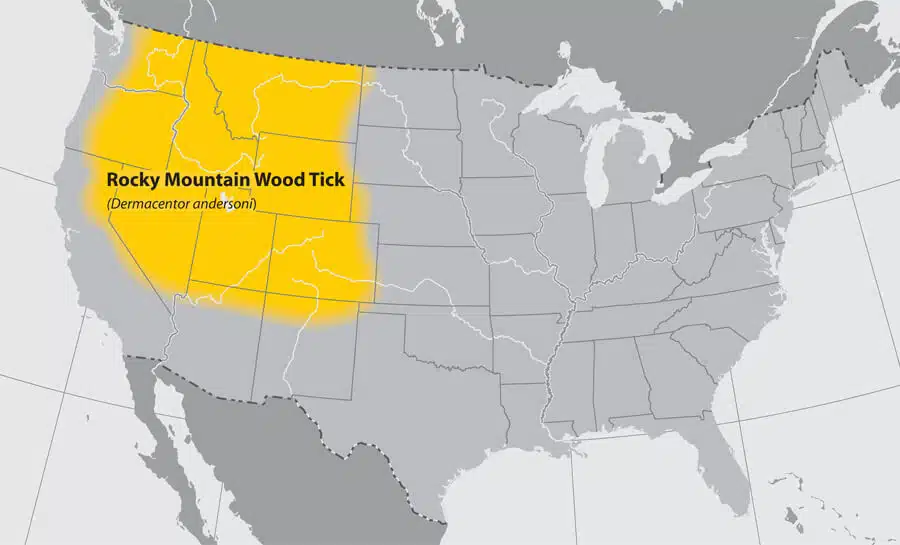
These types of ticks can transmit diseases are all stages of their lives.
Some of their most common diseases include Rocky Mountain Fever, Rabbit Fever, and Colorado Tick Fever.
This type of tick is also known to cause paralysis in humans.
It can paralyze extremities such as fingers, toes, and hands. Children and medium-sized animals are among those exposed to these risks.
In extreme cases, the tick can even kill a child or an animal if it is not removed after causing paralysis.
Other types of diseases and reactions children and adults face when bitten by this tick include tularemia with symptoms such as fever.
10. Winter Tick
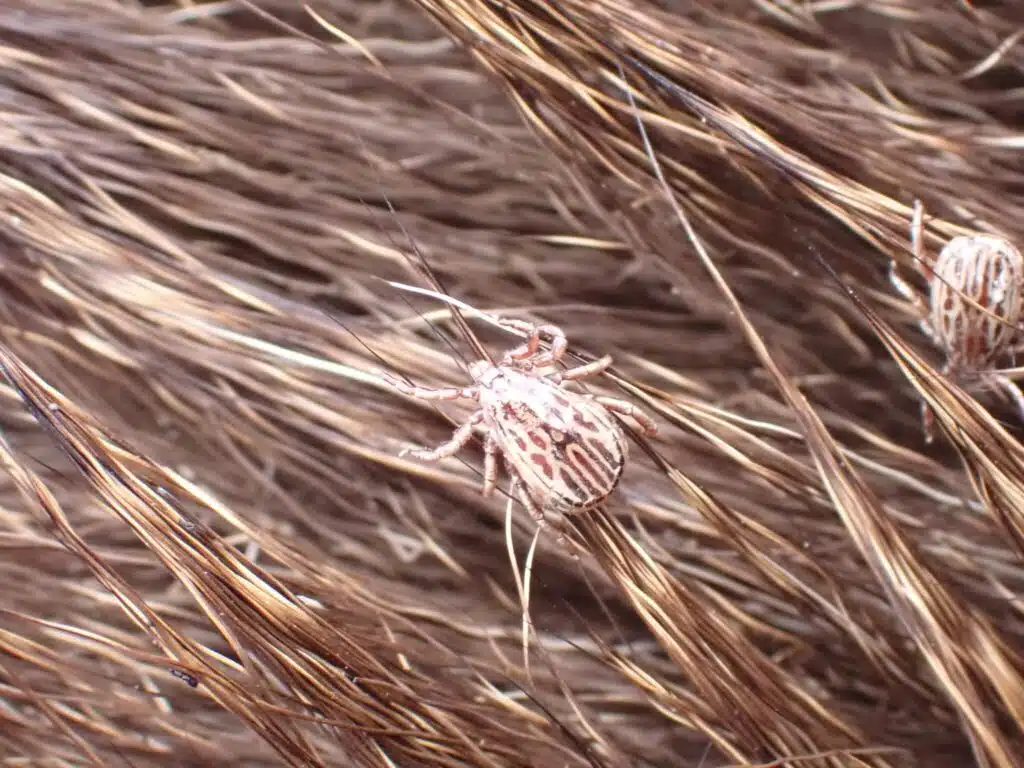
Winter Ticks (Dermacentor albipictus) are named after their habit of staying and feeding on the host through the winter.
These types of ticks have a common presence in North America. Found from coast to coast, Winter Ticks now have a reduced presence in California.
What used to be a local moose population is mostly gone. Moose is the main host of Winter Tick.
Furthermore, this tick is believed to be the primary reason for the decline in moose numbers across North America.
Multiple tick bites may kill a moose.
These types of ticks linger on in California on other types of closely-related hosts such as deer and elk.
Other types of hosts and human bites are also possible.
Cattle living next to pine woodlands might also be affected by these ticks.
11. Spinose Ear Tick

Spinose Ear Ticks (Otobius megnini) are also found in California. This is a common species known to cause parasitic otitis in animals.
Unlike bite cats and dogs, Spinose Ear Ticks are more likely to bite horses and cattle around woodlands in the state.
These ticks can also bite humans.
The name of the species is inspired by the tendency of the nymphs to settle in the ears of cattle and horses.
Getting Ear-Tick Associated Myotonia is one of the specific risks with Spinose Ear Ticks in California.
This species is known to resist pesticides in the acaricides group.
12. Poultry Tick

Poultry Ticks (Argas persicus) are found all around the state in regions with domestic poultry. These ticks are found on chickens and geese at home.
A yellow color is specific to the unfed Poultry Tick. This species turns brown-blue after it drinks blood.
The chicken impacted by this type of poultry might die.
These ticks can also bite humans but they tend to spread Borrelia anserine bacteria to chickens.
Paralysis of chicken and geese is common following the bite of the species.
Poultry trick may also be a vector for sepsis spread.
Tick Season in California
Ticks may be active throughout the year in California. Some die without a host while others survive up to 2 years waiting for a host.
Spring – most ticks are active in the spring. March and April mark the start of the busy tick season which may remain active until September.
Nymph tick season in California – springtime is most likely the peak season of nymph ticks in California.
Adult tick season in California – adult peak season in California runs from June to August.
Lyme Disease in California
Lyme disease incidence is low in California counties. Of all of the ticks in the state, only the nymphs and females of the Western Blacklegged Tick carry Lyme disease risks in humans.
An incidence between 1 and 2% in Northern California is specific to this species with human bites.
The first case of Lyme Disease was confirmed in California’s Sonoma County. The highest incidence of Lyme Disease transmission (around 4%) is in California’s Trinity County.
What to Do When You Are Bitten By California Ticks
California ticks are dealt with in a similar way to ticks in other US states. They need to be removed as they might spread diseases and bacteria if attached to the skin for a long time.
Carefully remove the tick with tweezers
You can use tweezers to remove ticks from your skin. Gentle upward movements are sufficient to remove ticks stuck in your skin.
Wash the bitten area with water and soap
It’s also recommended to wash the bitten area with soap and water. Cleaning the bitten area may remove bacteria that might come in contact with the blood in the bitten area.
Flush the tick down the toilet
You can then proceed to discard the tick. It’s best to flush it down the toilet to kill it instead of placing it in the trash can.
Visit your doctor if the tick has been attached to your body for more than 24 hours
Lyme disease and other diseases may need a long contact period. It’s believed only ticks that are attached for a day can transmit Lyme disease.
Consider sending the tick for an inspection
Your doctor may help identify the tick that’s bitten you if you’re unsure about the specie or the time it has been attached to your body.
You can place the tick in a sealed plastic bag to take it to your doctor for identification.
How to Prevent Ticks in California
California is one of the states where ticks can move hosts to humans easily. Some species die without a host while others survive up to a couple of years waiting for the next biting opportunity.
Most specialists agree prevention is key against ticks and the diseases they can spread.
1. Regularly groom dogs and cats
Cats and dogs are often tick-carrying vectors. They move around bushes, tall grasses, and vegetation and easily pick up ticks.
Most ticks climb vegetation in their area and open their front legs waiting for a passing host.
They can quickly attach themselves to the host and move along the body seeking a biting place guided by heat.
Regular grooming is ideal for pets. You can discover ticks on their body quickly just by using a pet brush.
Ticks that remain attached to the body of your pet may lead to pet paralysis and they might even kill dogs and cats.
2. Check clothes and pets for ticks when walking close to woodlands or in woodlands
Regular pet grooming might involve quick brushing a couple of times per week. You should check your pets daily if you’re out camping or spending a few days in a California cabin.
Dogs can pick up ticks quickly and you need to ensure a daily grooming routine when walking next to woodlands, hiking, or camping.
3. Trim vegetation around the house and properties bordering woodlands
Tall grass, shrubs, wildflowers, and tall vegetation, in general, are ideal humid places for ticks to hide in waiting for the next host.
Ticks might come close to the house the taller the vegetation around the house is.
Regularly trimming the vegetation and mowing the lawn accordingly is also recommended.
One of the highest risks of tick invasions in the backyard is specific to homes and properties next to woodlands on in areas next to wild animals such as deer, skunks, raccoons, or birds.
Ticks like to live close to deciduous, mixed, or coniferous woodlands. Make sure your yard vegetation is clear and trimmed if you have a property next to these types of woodlands.
Properties in remote areas next to deserts may also pose a risk of ticks if wild animals such as horned sheep are in the area and they also need to be cleaned and the vegetation on them trimmed.
4. Spray insecticides such as pyrethrin
Insecticides are often sprayed around the garden and the property to keep ticks away.
Not all ticks are killed by insecticides as some are even known to be immune to these chemicals.
Spraying insecticides is one of the complementary preventive measures to consider along with trimming vegetation, and checking pets and yourself for possible ticks or tick nymphs.
Make sure to read the complete instructions for the insecticide you plan to use if you spray it around the property yourself.
5. Control the larvae of Poultry ticks with malathion
Malathion is a type of insecticide commonly used against ticks, particularly those on poultry.
Even a small tick invasion can make your chicken sick. Larger invasions can kill all chickens.
Make sure to use this type of control method under the indication of a veterinarian.
6. Regularly check cattle and horses and their feeding area
Cattle in California are particularly exposed to tick bite risks. Cows on pastures are often facing multiple species of ticks.
The large size of cattle and their slow-moving patterns are combined with a grass-feeding habit which makes them a vulnerable species that is often bitten by ticks.
Cattle in the areas around woodlands are more likely to be bitten by ticks compared to farms where cattle are raised indoors.
7. Pay attention to cattle and pets that look sick
A sluggish cow or dog may be a sign of a tick bite. Discovering ticks on their body is crucial as they can be saved and female ticks may be collected before they drop and lay eggs.
A blood-fed female drops to the ground and spread as many as 5-7.000 eggs. Discovering the female on cattle or pets may stop the female from spreading the eggs around when killed.
8. Wear long sleeve clothes out in nature
Long sleeve clothes are recommended for all hiking adventures in California.
Even following trails in the Southern deserts of the state might still expose you to the risk of tick bites.
The Mojave and The Colorado Deserts are common areas where The Bighorn Sheep Tick can easily bite humans.
Camping out in the desert can be just as risky as camping next to woodlands when it comes to picking up ticks in California.
Make sure you wear long sleeve clothes to reduce the immediate risk of a bite.
You should also check your clothes before returning home or before entering cars or tents when camping in any part of the state, including deserts.
The season of ticks in California peaks in the spring and in summer. Make sure you wear long sleeve clothes even in warm weather. Choosing natural materials in clothes and thin layers is considered a good practice as ticks cannot bite through clothes and because ticks are guided by skin temperature to find a suitable place to bite.